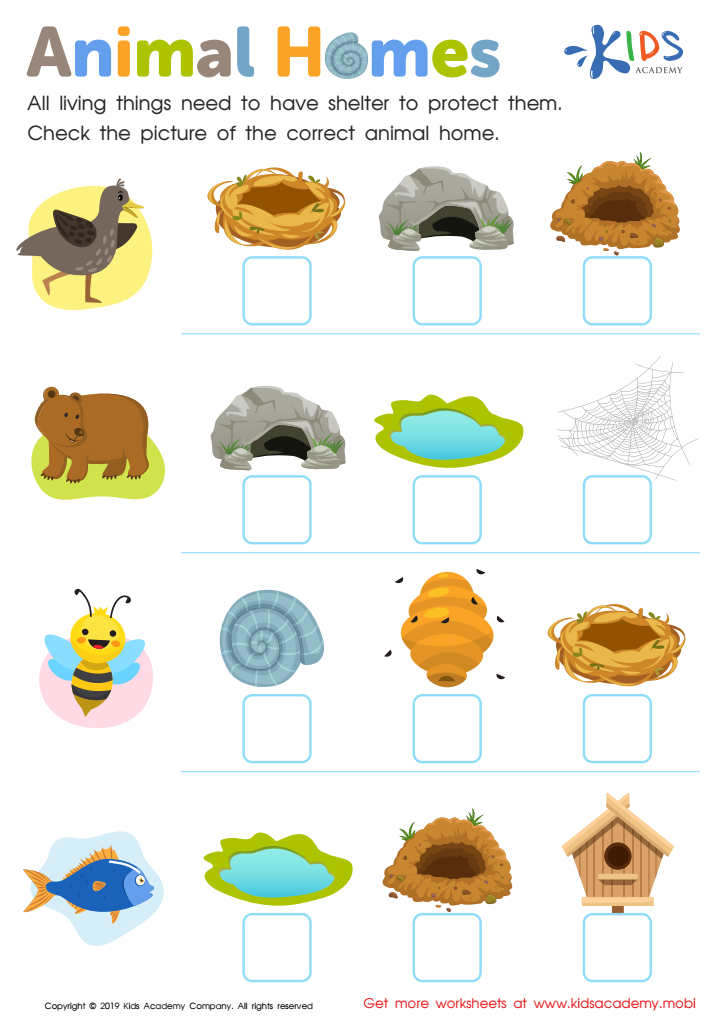Reading comprehension Normal Plants and Animals Worksheets for Ages 3-6
13 filtered results
-
From - To
Discover engaging "Reading Comprehension Normal Plants and Animals Worksheets for Ages 3-6", designed to make learning about nature fun and interactive. At Kids Academy, our expert-crafted worksheets are tailored for young minds, offering age-appropriate passages with beautiful illustrations to captivate your child’s attention. Through these exercises, kids enhance their reading skills while gaining valuable knowledge about different plants and animals. Perfect for both classroom and home use, these worksheets aim to foster a love for reading and science, helping children make connections to the world around them. Start your child's learning adventure with Kids Academy today!


The Cactus Plant Worksheet


Plant Fun Worksheet


Thorns and Spikes Worksheet


Water, Water Everywhere! Worksheet


Animal Homes Worksheet


Migrate or Hibernate? Worksheet


Arctic World Worksheet


Life Cycle Frog Printable


Animals That Burrow Worksheet


Siblings Quiz Worksheet


Where Animals Live Worksheet
Parents and teachers should care about reading comprehension of topics like Normal Plants and Animals for children ages 3-6 because early exposure to natural concepts fosters curiosity and foundational knowledge about the world. Understanding basic information about plants and animals stimulates cognitive development and encourages children to explore, ask questions, and think critically. Recognizing familiar plants and animals enhances vocabulary in a meaningful context, improving language skills and communication abilities.
Moreover, these early discussions nurture a bond with nature, promoting environmental awareness and a sense of responsibility to care for living things. This connection potentially cultivates lifelong habits of empathy and stewardship toward the environment.
Engaging with reading comprehension activities that cover plants and animals helps build attentiveness, listening skills, and memory, which are crucial for academic success. Children can relate text to their own observations and experiences, thereby strengthening their comprehension skills and making learning relatable and enjoyable.
Lastly, such topics support social interaction and collaborative learning. For example, activities involving garden plants or a trip to a zoo create opportunities for hands-on learning and group discussions, enhancing social skills. By fostering a love for reading and nature early on, children develop a well-rounded growth that benefits them academically and personally.
 Assign to My Students
Assign to My Students
















